Pasture to Plate: A Culture-Driven Beef Business
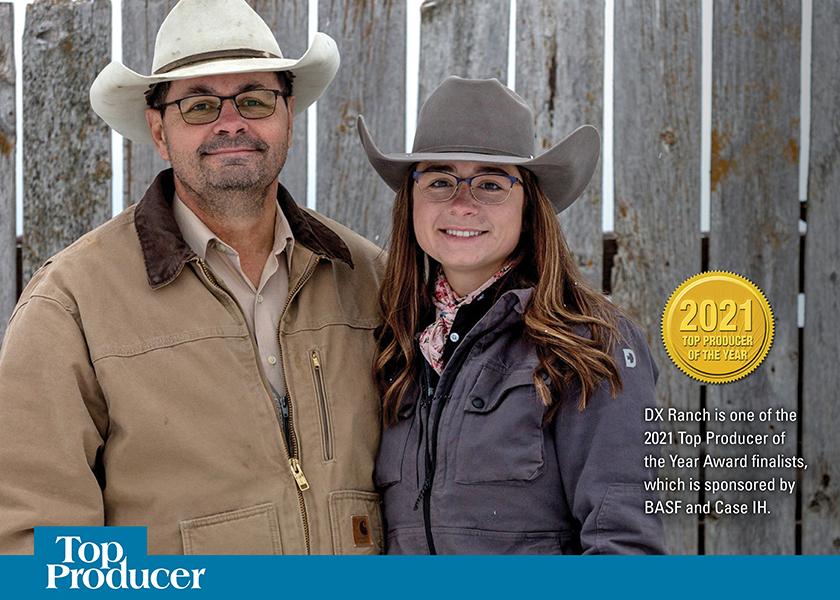
The Ducheneaux family reconnects consumers with their food source
Kelsey Ducheneaux-Scott sat on her front porch, stared out across rolling pastures and thought, “What the hell did I do?” She had just heaved box after box into freezers in the living room, kitchen and laundry room — carefully dispensing 1,700 lb. of ground beef.
Exhausted from the haul (and hoping the circuits wouldn’t blow due to strategically placed freezers) Ducheneaux-Scott couldn’t believe the sheer amount of work before her. How was she going to sell so much grass-fed burger in three months, before her next butcher appointment? Anxiety and stress seeped in during that cold March night in 2020. Little did she know how quickly that product would move.
“COVID hit and there was no beef in any of our stores,” Ducheneaux-Scott recalls. “We sold out of that 1,700 lb. in a matter of three weeks. People realized how easily local grocery stores can be disrupted here in rural South Dakota.”
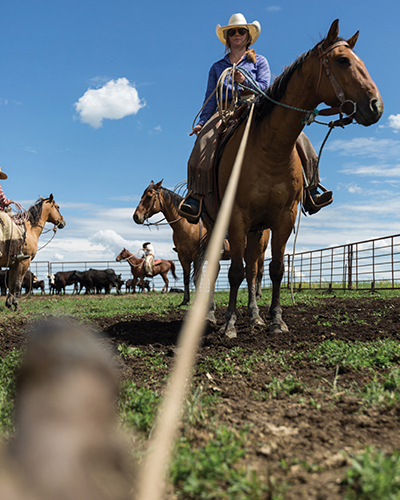
PASTURE TO PLATE
With a focus on feeding those around her, Ducheneaux-Scott is leading a transformation of her family’s operation. DX Ranch was established in the 1930s near Eagle Butte, S.D., on the Cheyenne River Sioux Indian Reservation. It began with beef cattle and draft horses.
Today, Ducheneaux-Scott and her husband, Monte Scott, work alongside her family raising quarter horses and 280 head of cow-calf pairs in a regenerative production system.
“I am a fourth-generation rancher on DX Ranch, and I’m the 125th generation to steward this landscape,” Ducheneaux-Scott says. “We’ve focused on ensuring we’re not just thinking about the livestock above ground but also thinking about the livestock below ground.”
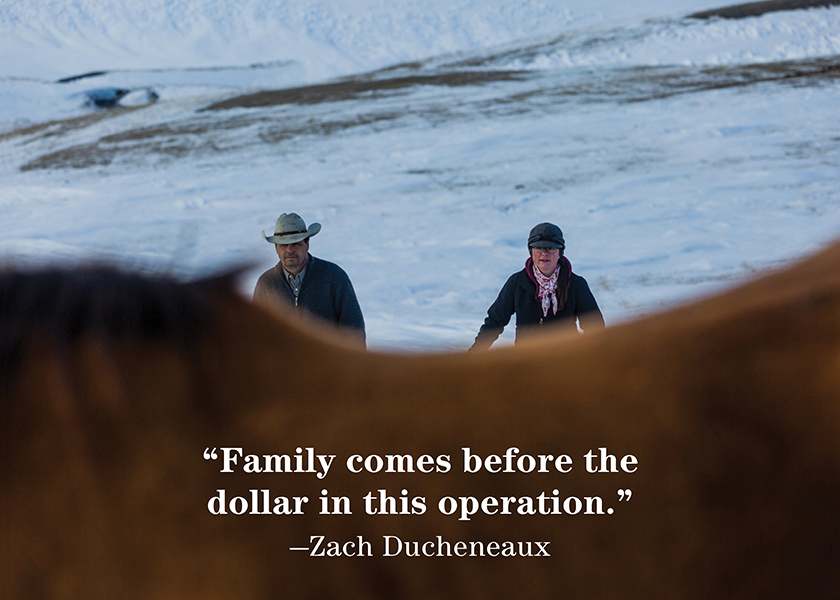
FATHER-DAUGHTER DUO
For her entire life, Ducheneaux-Scott has worked alongside her father, Zach Ducheneaux. That was until early 2021, when Ducheneaux was selected by the Biden administration to serve as the Farm Service Agency administrator (he received the call for the position while they were at the sale barn).
Luckily, Ducheneaux had prepared his daughter to be a leader on the ranch and in life. They are members of the Lakota tribe, which is a matriarchal society.
“My dad never let me think I couldn’t do something because I was a girl,” Ducheneaux-Scott says. “He empowered me to believe I could do things better because I was a girl and had a different perspective.”
After college, Ducheneaux-Scott wanted to be a rancher and bought into the family’s cowherd in 2016.
“I was obsessive in watching those calves grow that year,” she says. “I might as well have had names and birth certificates for every calf.”
After selling that calf crop, Ducheneaux-Scott headed back to the ranch and pondered the future.
“I drove through two counties that face food insecurity,” she says. “I thought, golly, the system is so broken. We have up to 80,000 head of cattle grazing on 3.2 million acres here on the Cheyenne River Sioux Indian Reservation, and there isn’t any local beef being packaged and made available for purchase. The beef grown here is phenomenal, but none of us get to actually eat it.”
At home, she scribbled down a bunch of ideas and started a business plan. That plan morphed into DX Beef, which has a simple mission: Provide nutritious and local beef that improves its communities.
The direct-to-consumer business featuring their 100% grass-fed beef has expanded in the past two years and is helping the family move away from the commodity market model.
“For the first 90 years of our existence, we’d largely been victim to the commodity markets just like everyone else,” Ducheneaux says. “Behind the effort of Kelsey, in 2020, for the first time, we sold more beef in the box than we did on the hoof. A tremendous advocate for buying, selling and serving
locally, she’s found a way to provide healthier, grass-finished beef to our fellow reservation residents at a price they can afford.”
In 2019, the family sold 12 head of cattle through their business. In 2020, they sold close to 80. This year the total will top 110.
All beef is processed and mostly sold through their online store. To meet local needs, it is sold by the pound or portion of the whole beef. They even do wholesale orders for nearby restaurants.
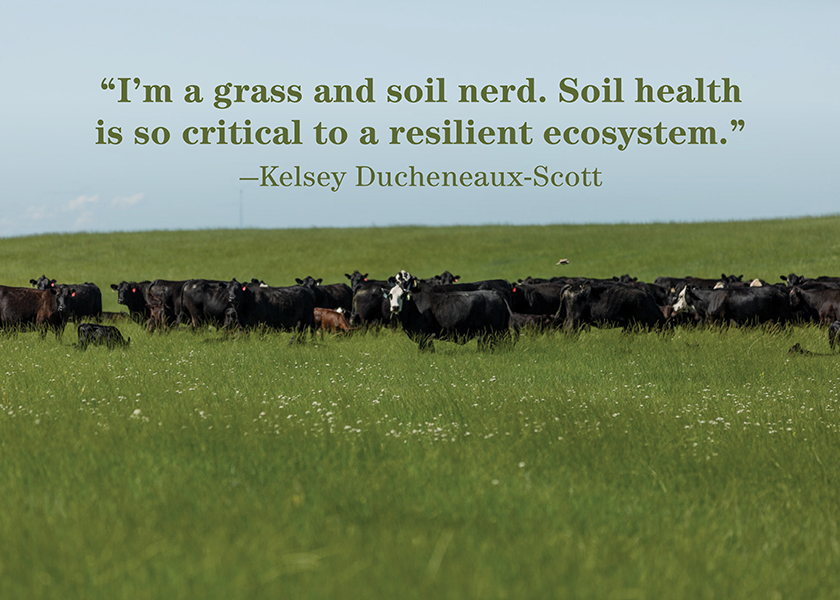
CULTURE AND TRADITION
The hurdles of small-scale direct marketing are difficult to overcome. Yet Ducheneaux-Scott is seeing great success thanks to her marketing and organizational skills. Through storytelling, which is rooted in their Lakota culture, the family uses technology to share the story of their ranch and products.
“Family comes before the dollar in this operation,” Ducheneaux says. “We’re not solely about monetizing the value of that product, and we realize there are other values to our beef.”

Their story is shaped by their love and respect for the 7,000 acres of tribal land they manage through a tribal lease.
“I’m a grass and soil nerd,” Ducheneaux-Scott says. “Soil health is so critical to a resilient ecosystem. Our grazing system is focused on mimicking nature. This ecosystem evolved from having cloven-hoofed bison and other wildlife graze at a pace that allowed for a robust rest period, so we practice rotational grazing.”
The DX Ranch herd is an Angus base, influenced with breeds that will help the cattle handle the sometimes-brutal central South Dakota climate, Ducheneaux-Scott says. From changing their calving season to May to decrease cattle stress to steadily increasing soil health, the Ducheneaux family aims to work with Mother Nature.
“We have flexibility in our management so we can listen to what the landscape is telling us because she knows better than we do,” Ducheneaux-Scott says. “We
are simply another biological species that’s a part of this greater ecosystem.”
Listen as Kelsey Ducheneaux-Scott discusses her operation with Andrew McCrea on the "Farming the Countryside" podcast:
OTHERS BEFORE ONESELF
As a producer, business owner and member of her nation, Ducheneaux-Scott says she is driven by the opportunity and honor to feed others.
“I’ve come to appreciate having someone tell say your beef tasted good or how they brought their family together around our product,” she says. “Those are the experiences that make feeding cows in a blizzard, slopping through the mud to check calves and sleepless nights all worth it.”
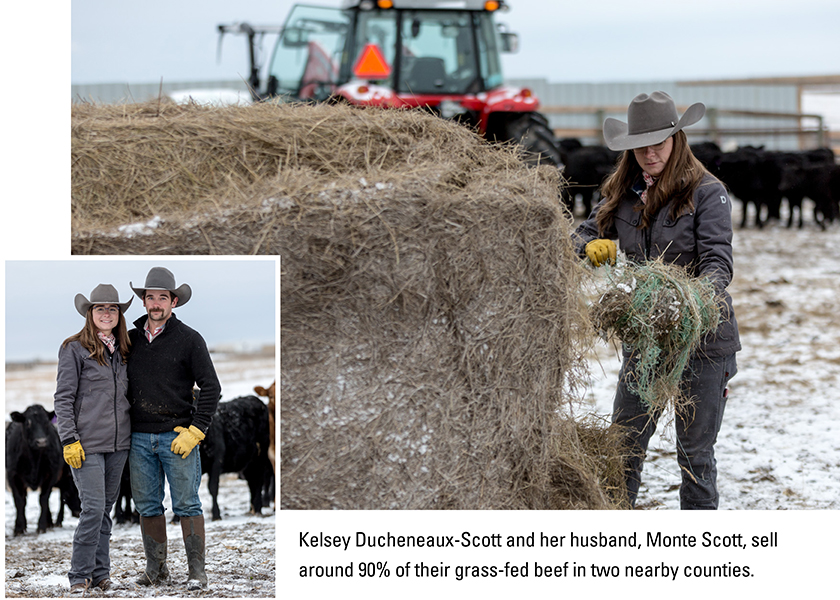
Snapshot of DX Ranch
Operation: DX Ranch includes quarter horses and 280 head of cow-calf pairs in a regenerative production system on the Cheyenne River Sioux Reservation near Eagle Butte, S.D. The ranch is also home to DX Beef, a direct-to-consumer business featuring their 100% grass-fed beef.
Family: Following in the footsteps of her father, Zach Ducheneaux, Kelsey Ducheneaux-Scott is the fourth generation of her family to ranch. She and her husband, Monte Scott, work with several members of her family in the operation.
Leadership: Ducheneaux-Scott is the director of programs for the Intertribal Agriculture Council, which provides a voice for the Native American community on ag policy and programs. In 2021, Ducheneaux was selected to lead the Farm Service Agency, where he oversees 10,000 employees.







